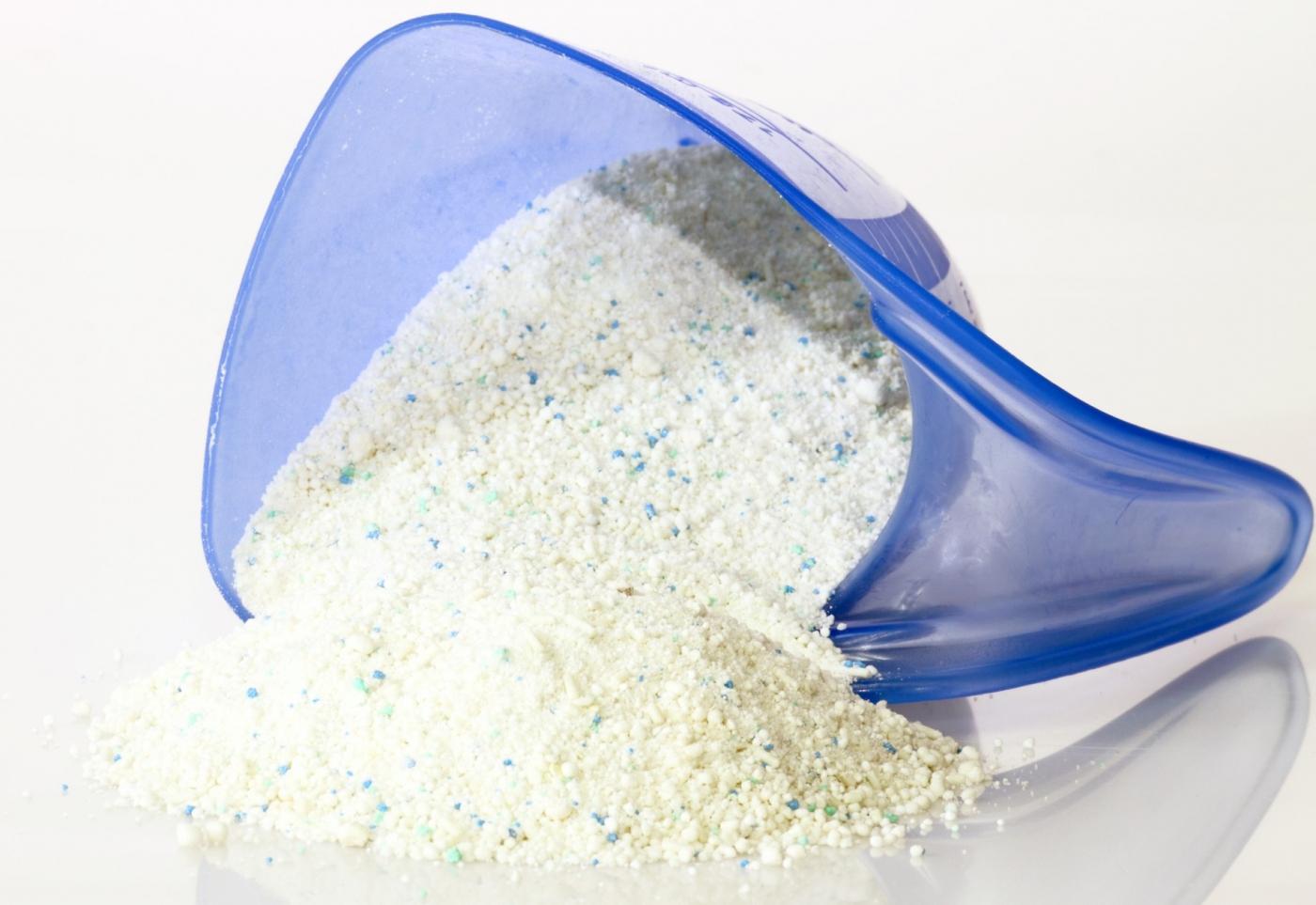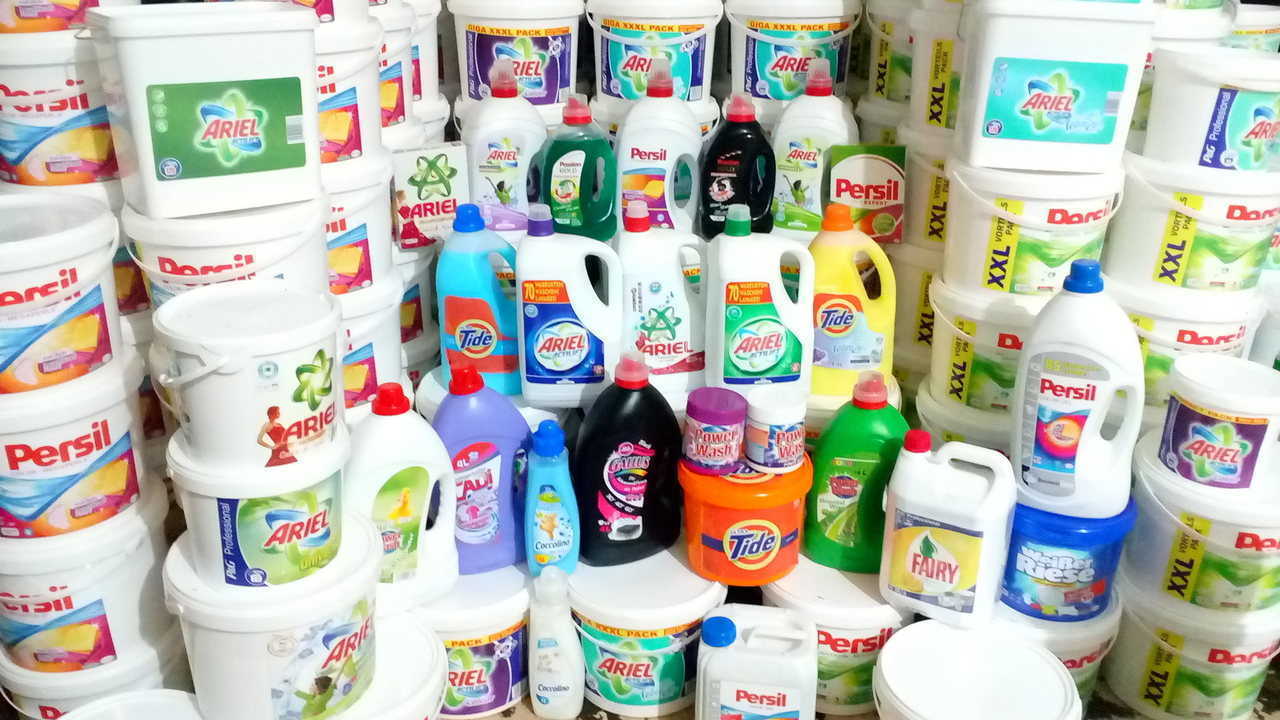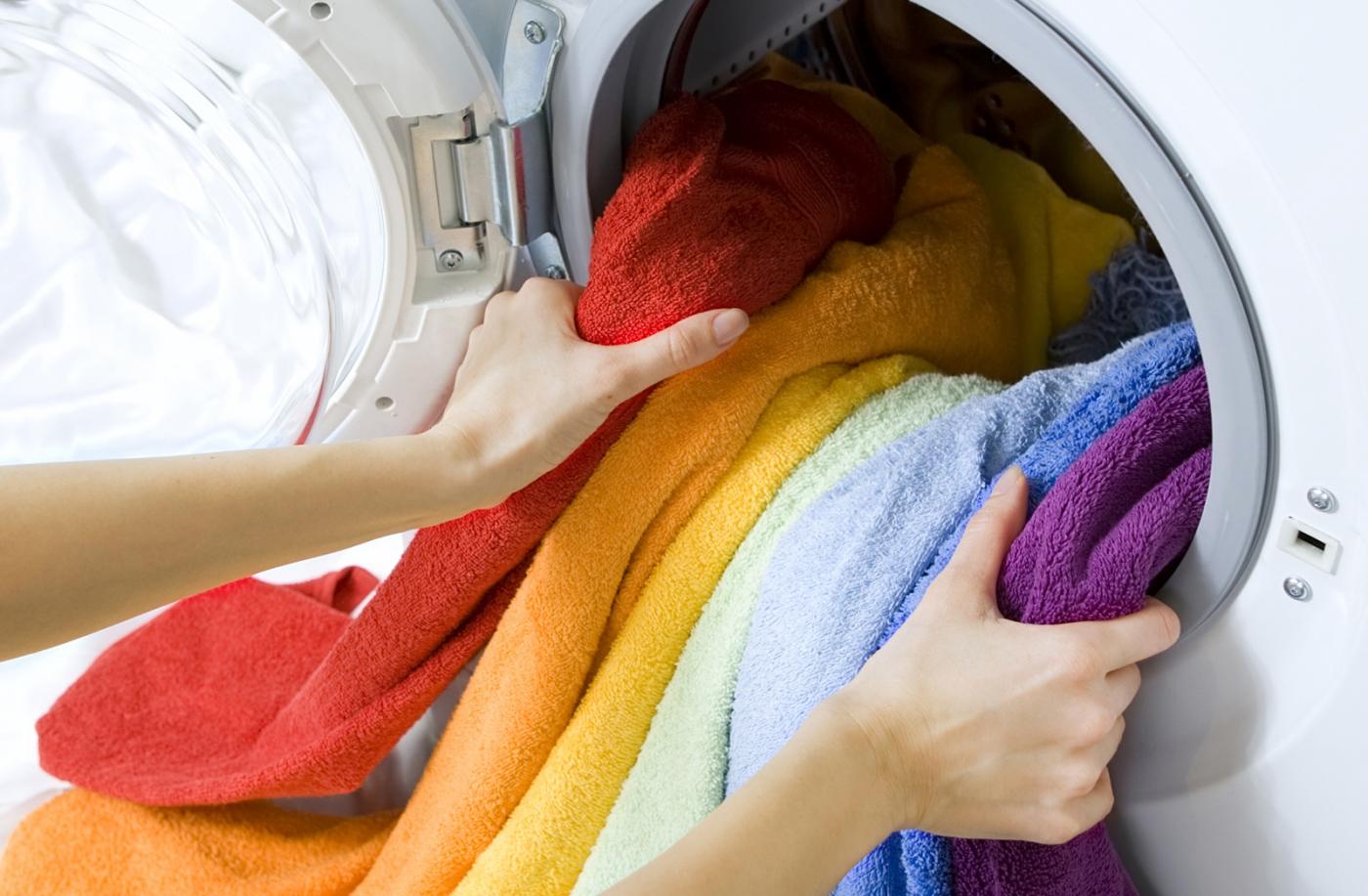Laundry detergent is an all-purpose household detergent. It consists of a variety of synthetic substances and compounds. The chemical composition of the washing powder depends on its type and purpose (for colored fabrics, wool, bleaching). Therefore, powders are universal or special.
Chemicals required for all types of powders
The basic basis of all washing powders is surfactants (surfactants). These active ingredients are used for the production of not only washing, but also cleaning powders. The surfactant not only removes contamination from the surface, but can also be used as a deactivator. They decontaminate radioactive elements on various items: clothes, dishes, premises.
The most common surfactant in laundry detergent is alkylbenzenesulfonate. It is a free-flowing powder in the form of granules, without a pungent odor, yellow or light brown in color. The substance belongs to the non-ionic surfactant group, which makes the washing powder “gentle” when washing and gives it the following advantages:
- immunity and resistance to water hardness;
- high quality washing when using a small amount of powder;
- effectiveness of synthetic detergent at low water temperatures;
- containment of large foaming;
- providing an antistatic effect;
- preventing color loss
- hypoallergenic (compatibility with the skin).
The second important component of washing powder is salts - complex substances that, in aqueous solutions, ensure the breakdown of chemical compounds and their dissolution. In the production of detergents, two types of salts are most often used - sulfate and sodium chloride.

Sodium sulfate in washing powder is no more than 10% and acts as a thinner. It is the sodium salt of sulfurous acid in the form of colorless crystals. It is used only for non-concentrated powders.
In the production of compact synthetic detergents, salt is used in small quantities or not at all.
The composition of the powder includes sodium silicate - a finely dispersed substance of white color, odorless and tasteless. Its main function is to bind contaminants (dust) and create an alkaline pH environment. Sodium silicate is an effective adsorbent. But the salt of silicic acid, when it comes into contact with the skin, can cause allergic reactions, and inside - eating disorders.
Another element that is used in the manufacture of synthetic detergent is soda. Its types, which are included in the chemical formula of washing powder:
- sodium bicarbonate (baking soda);
- sodium carbonate (soda ash or laundry);
- sodium hydroxide (caustic soda).
Additional components in the composition of the washing powder
Laundry powder consists of a variety of additional chemical components that determine its narrow application.
Cationic surfactants
It is an ammonium salt based on natural fatty acids. It does not have pronounced detergent properties, but is used as a potent bactericidal additive. Therefore, cationic surfactants are added to the composition of powders for washing baby clothes.
Moreover, they are compatible with various fragrances, make all types of fabric fibers soft. When re-moistened, the fabric absorbs water well.
Substances that bind magnesium and calcium ions
Zeolites are glassy minerals with a pearlescent sheen. They are able to absorb and release water depending on environmental conditions (humidity, temperature).

Zeolites are substitutes for phosphates in powder, act as adsorbents and catalysts for chemical reactions.
Sodium tripolyphosphate is an additive for synthetic detergents. Fluffy white powder or in the form of granules. Freely soluble in water. Its properties:
- regulates the pH environment;
- prevents the formation of sediment in hard water;
- deactivates toxic substances;
- disinfects fabrics and surfaces;
- cleanses and whitens.
Trilon B or disodium salt of acetic acid - white powder or crystals. Soluble in alkali and water. The chemical provides the formation of foam and the cleansing of dirt from the fibers of the fabrics. This is an important additive that creates the right soapy environment for any water hardness. The additive discolors stains on various types of fabrics.
Citrates are salts of citric acid. Substances prevent changes in the pH environment.
Polycarboxylates
Polycarboxylates are water-soluble polymers of carbon. They are part of phosphate-free washing powders. Possess active cleaning and washing ability. Substances eliminate dirt, easily transfer it, prevent darkening of paint on fabrics. Polycarboxylates prevent the formation of sediment and scale.
Defoamers
Defoamer is an antifoam agent of high activity and compatibility with other components of the powder. It is used in the manufacture of detergents for automatic washing with subsequent use in front (horizontal) loading washing machines.
Positive qualities of defoamers:
- interact with different types of surfactants;
- active at any temperature;
- operate in water of varying degrees of hardness;
- quickly distributed over the entire surface, do not precipitate;
- do not accumulate in the body, as they have low parameters of chemical and physical oxygen consumption.
Antiresorbents
These are chemical compounds that, when washed, prevent the reverse penetration of dirty particles from water into fabrics. They also prevent dullness and discoloration, and on whites they prevent graying.

Polymers increase the permeability of tissues with air, thus reducing the accumulation of static electricity.
Enzymes
Another name is enzymes. This is a bioadditive that is a catalyst for chemical and biological processes. With the help of enzymes, stubborn stains and dirt are removed.
Protein enzyme classes:
- proteases (alkaline enzymes) - remove protein contaminants;
- lipases - neutralize oils and fats;
- amylase - remove stains containing starch;
- cellulases - saturate the color of the fabric, remove the smallest particles of dirt, soften the fibers, retain whiteness;
- keratinases - remove the remnants of the skin epithelium.
Fragrances and fragrances
These are synthetic or semi-synthetic compositions with a complex chemical composition. They complement and enrich the laundry detergent with fragrance and freshness. Dry fragrance is presented in the form of granules on a water-soluble basis. The color of the granules is varied. It determines the appearance of the powder. The fragrance retains the smell of the detergent unchanged throughout the entire shelf life.
Bleach powder
The powder may contain bleach. They are of two types - optical and chemical. They create a convenient function - simultaneous washing and bleaching.
Optical brighteners
These are fluorescent bleaches. The essence of their action is the absorption of ultraviolet rays and their transformation into light waves of violet or blue.
Scope of optical brightener in washing powder:
- cotton fabric;
- natural silk;
- synthetics;
- fur;
- leather.

Optical brightener is suitable for fabrics of any color. It gives whiteness to colorless fibers, and fabrics with prints acquire a bright, saturated and contrasting color.Its content in the powder ranges from 0.01 to 0.1%, depending on the type of bleach.
Oxygen-containing bleaching agents
Another name is peroxide bleach. Types of chemical compounds:
- perhydrol - hydrogen peroxide;
- persalt - sodium percarbonate;
- hydroperite - potassium peroxodisulfate.
These compounds contain oxygen atoms. When water is heated, bleach releases O atoms.2, which oxidize dirt and discolor the fabric. Twater heating temperature for maximum peroxide activity is 80-90°C. Therefore, this type of bleach is intended for those types of fabrics that are subject to washing at high temperatures (boiling) - cotton, linen.
TAED
It is a whitening activator. It is actively used to remove contaminants from a wide variety of fabrics. TAED effectively removes stains from tea, coffee, wine, grease, coloring vegetables and fruits. The mechanism of action is the chemical decomposition of contaminants on the fabric surface due to the oxidation reaction.
TAED (tetraacetylethylenediamine) exhibits chemical activity already at a water temperature of 20-40°C. The pH conditions for the action of the activator is 9-10.5. With a decrease in these indicators, the bioavailability of the substance does not decrease. The higher the concentration, the stronger the whitening effect.
TAED removes impurities without affecting the natural color of fabrics. Activators are used for both hand and machine washing.
According to the formula tables for washing powders, the content of activators is different:
- detergent with low education of the European type for automatic machines - 1.7 parts by weight;
- highly concentrated laundry detergent - 3.8 parts by weight of TAED;
- universal powder - 1.7 parts by weight.
The chemical composition of a synthetic detergent has a similar consistency, regardless of what substances were used in production.The density of the washing powder is 900 g per 1 liter. When choosing products, it is necessary to take into account the direction of use - the type of fabrics, the degree of contamination of the fibers, the washing mode (manual or automatic). The average dosage of powder for cleaning 5 kg of laundry is 120-150 g.
